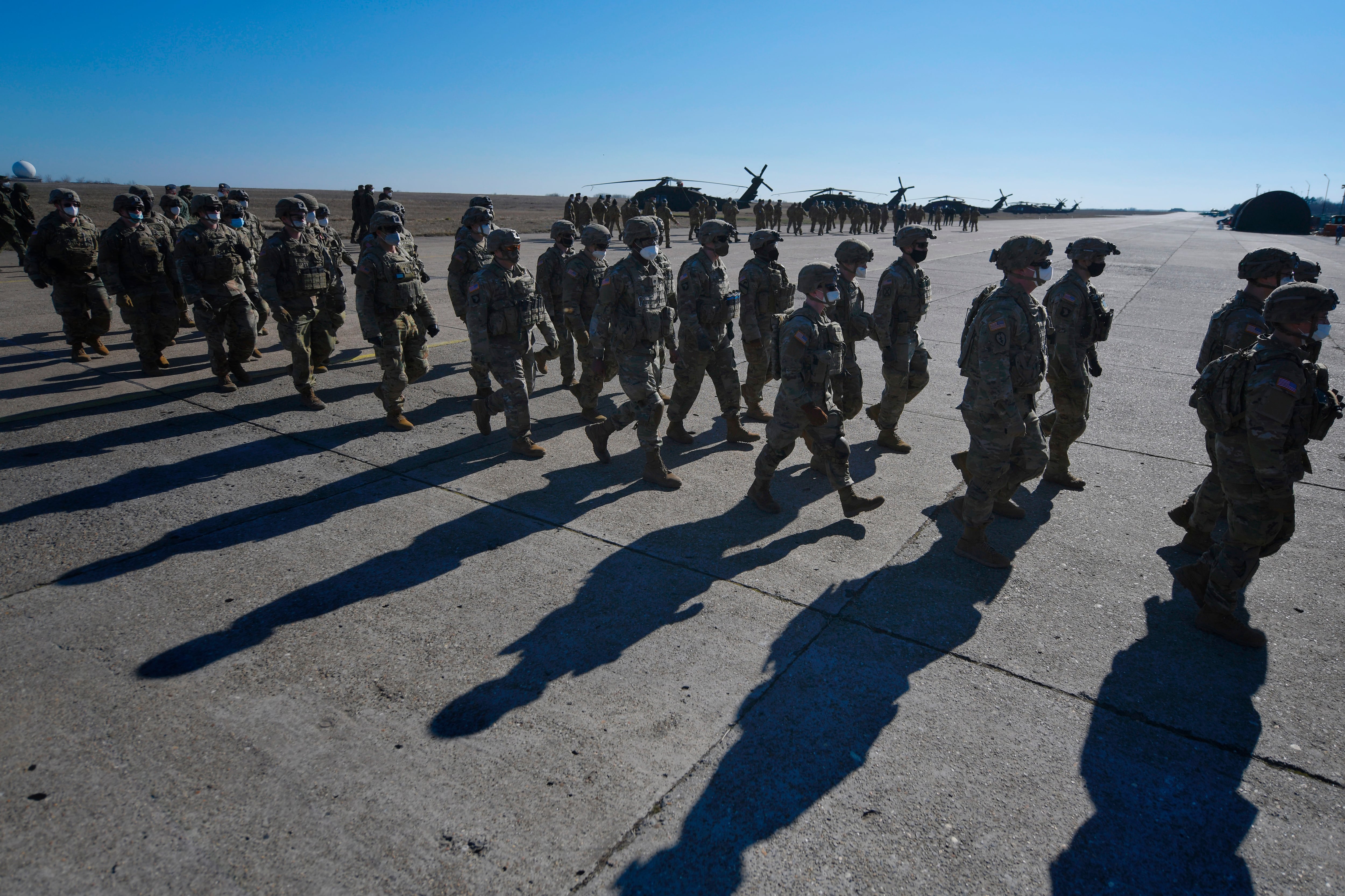WASHINGTON ― The White House has formally asked Congress for $32.5 billion in pandemic relief and “critical assistance” to help Ukraine fight off a Russian invasion, with $4.8 billion for the Pentagon, as part of an updated supplemental spending request.
Ukraine spending makes up $10 billion, split between the Pentagon ― for troop deployments in Eastern Europe, covert support and to replace U.S. weapons sent to Ukraine ― and the State Department, for humanitarian, economic and military aid. The request unveiled Thursday marks a big jump from the Biden administration’s stated need of $6.4 billion for Ukraine aid days ago.
Acting White House budget director Shalanda Young outlined the new request in a March 2 letter to House Speaker Nancy Pelosi, D-Calif.
“This request identifies an immediate need for $10.0 billion in additional humanitarian, security, and economic assistance for Ukraine and Central European partners due to Russia’s unjustified and unprovoked invasion,” Young said in the letter, adding that she foresees additional needs over time.
Young also urged Congress to pass full-year appropriations bills for fiscal 2022, already five months overdue and needed to prevent a federal government shutdown by March 11. She echoed Pentagon leaders who have said the chaos of multiple stopgap spending bills hurts their planning and budgeting.
“The absence of full-year appropriations would continue to constrain Department of Defense (DOD) resources, readiness, and operations around the globe,” she said. “The impact on readiness and operations would constrain priority efforts in Europe and also leave the U.S. more vulnerable to other potential adversaries exploiting the global situation.”
RELATED

The Ukraine part of the request breaks down as follows:
- $1.8 billion to cover troop deployments in support of U.S. European Command and NATO Response Forces, including funding transportation of personnel and equipment, temporary duty, special pay, flying hours, airlift, weapons system sustainment, medical support and other unit support costs.
- $1.25 billion for cybersecurity, intelligence and classified programs. “This funding supports operational surges across multiple national defense components” and includes “weapons system upgrades.”
- $1.35 billion to replenish stocks of U.S. military weapons for Ukraine, military education and training, and “immediate military assistance to Ukraine.”
- $5 billion for State Department humanitarian and economic aid efforts, with $500 million in foreign military financing to support Ukraine and “top security requirements” of Eastern European NATO allies.
- $1.2 billion in presidential authority to draw further from U.S. military stocks with some broader authorities. To provide excess defense equipment, the White House wants a waiver of the requirement it notify Congress within 30-days and monetary limits as well as the authority to reprogram funds from fiscal 2022 and prior years for Ukraine.
- $200 million across the Commerce, Energy, Justice and Treasury departments for other efforts to target Russia and support Ukraine, including sanctions enforcement, Russia and U.S. supply chain analysis.
Some lawmakers have urged the Biden administration, which has already committed $1 billion in security assistance to Ukraine, to move swiftly and with more resources to keep Ukrainian forces supplied. Russia’s invasion of Ukraine is taking a darker turn, marked by fresh assaults on residential areas and and a refugee exodus that just hit 1 million people.
“Just briefed that 100% of the Defense Dept portion of the $6.4B aid package the Biden admin is requesting from Congress is to pay for the U.S. troops deploying to Europe and to replenish U.S. war stocks NOT new lethal aide for Ukraine,” Florida Rep. Michael Waltz, the top Republican on the House Armed Services Committee’s readiness subpanel, tweeted Wednesday. “[Ukrainian President Volodymyr] Zelensky needs more ammo NOW!”
The U.S. has delivered hundreds of Stinger anti-aircraft missiles to Ukraine for the first time over the last few days, including over 200 on Monday, NBC News was first to report.
The $22.5 billion in COVID relief funding is a partisan sticking point. U.S. President Joe Biden said it’s needed to prepare for future variants, while three dozen Republican senators sent a letter to the White House questioning it.
Another dispute is that some Republicans have called for Ukraine aid to be considered separately from an annual appropriations package. Senate Majority Leader Chuck Schumer, D-N.Y., has said the FY22 spending package is the “quickest and most efficient way to” approve the aid.
“Nothing would make Putin happier than having Democrats and Republicans divided,” Schumer said Tuesday.
Whether Congress can move quickly will be a test of its resolve to address the Ukraine crisis, said the Foundation for Defense of Democracies’ Bradley Bowman, a former advisor to members of the Senate Armed Services and Foreign Relations committees.
“For members of Congress who’ve been critical of Biden’s slow response on Ukraine, now is an opportunity to walk the talk,” Bowman said in a tweet Thursday. “Let’s see how fast Congress can move.”
Joe Gould was the senior Pentagon reporter for Defense News, covering the intersection of national security policy, politics and the defense industry. He had previously served as Congress reporter.





